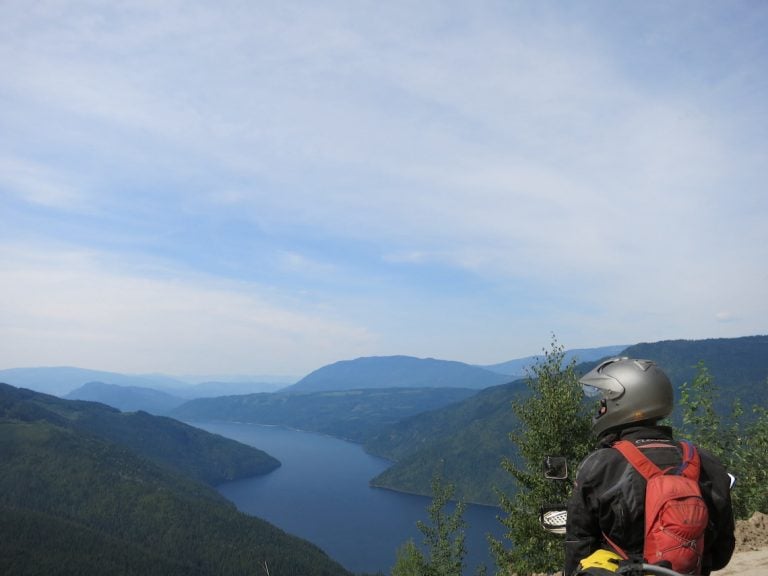Bears, mud, water and mountains David Allen recounts the best bits of the Trans Canadian Adventure Trail
“How far?” asked Alex.
“About 9,300 miles but the trail has yet to be ridden in one go so that is only an approximation,” I replied.
The previous week he had answered my advert on the Horizons Unlimited website for a companion to ride the Trans Canadian Adventure Trail (TCAT). The trail was brand new and had been created in sections by local motorcyclists to link St John’s, Newfoundland in the east to Grant Bay on the west coast of Vancouver Island, British Columbia.

The goal was to avoid tarmac by using gravel roads, ATV trails, logging tracks, on a couple of occasions cross country skiing trails and a downhill ski run. The GPS route for the TCAT can be obtained without charge from www.graveltravel.ca which also has instructions for similar routes in Canada.
Jump forward four months and it is now June 2013 and it seems like only yesterday that Alex agreed to join me on the TCAT. He had made it clear that he had plenty of off-road riding experience and I was hoping that this might help offset my lack of dirt skills.
It turns out that we were both from the same part of the UK, though I was studying in Canada, but despite this geographical displacement we managed to meet once before assembling for the start in Halifax, Nova Scotia, Canada. My first adventure bike, Maisie, was bruised and battered after a RTW trip and was living somewhere in southern England.
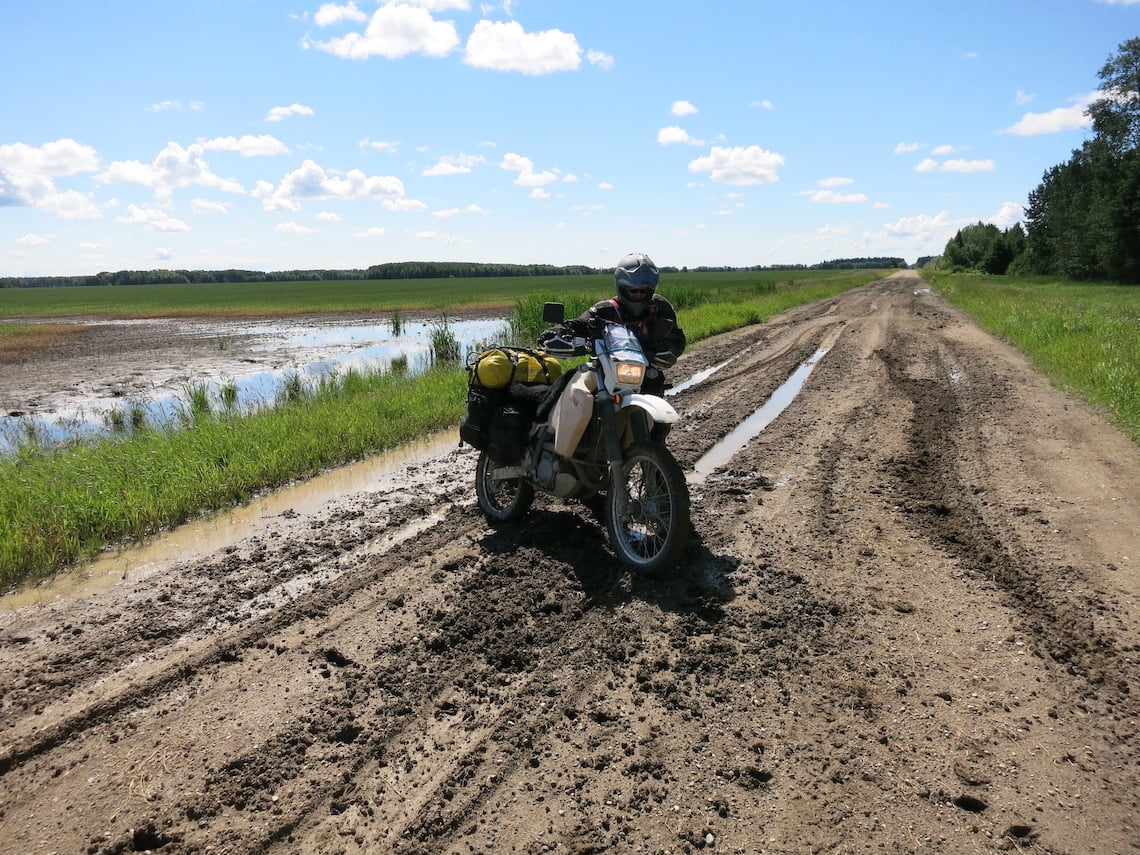
She had been replaced by Daisy who was dead and buried in the Peruvian Andes and the next in line for the crown was Crazy. She was born a small, inoffensive Suzuki DRZ400s and I had to turn her into a mighty adventure motorcycle. Modifications which included an upgraded rear spring, an aluminium skid plate, handguards, a 28-litre fuel tank and a set of soft luggage were hastily added.
I had also thought about lowering Crazy to accommodate my stubby legs but time pressures did not allow. I had ignored the Seven Ps and how I would rue that lapse! For those of you who are unfamiliar with the Seven Ps: ‘Prior Planning and Preparation Prevents Piss Poor Performance.’
In contrast to plodding Crazy, Alex had brought along a wheel spinning, gravity defeating and ditch-jumping BMW G650X Challenge. This motorcycle obviously had personality issues since it had an uncanny ability to wheelie past Harleys.
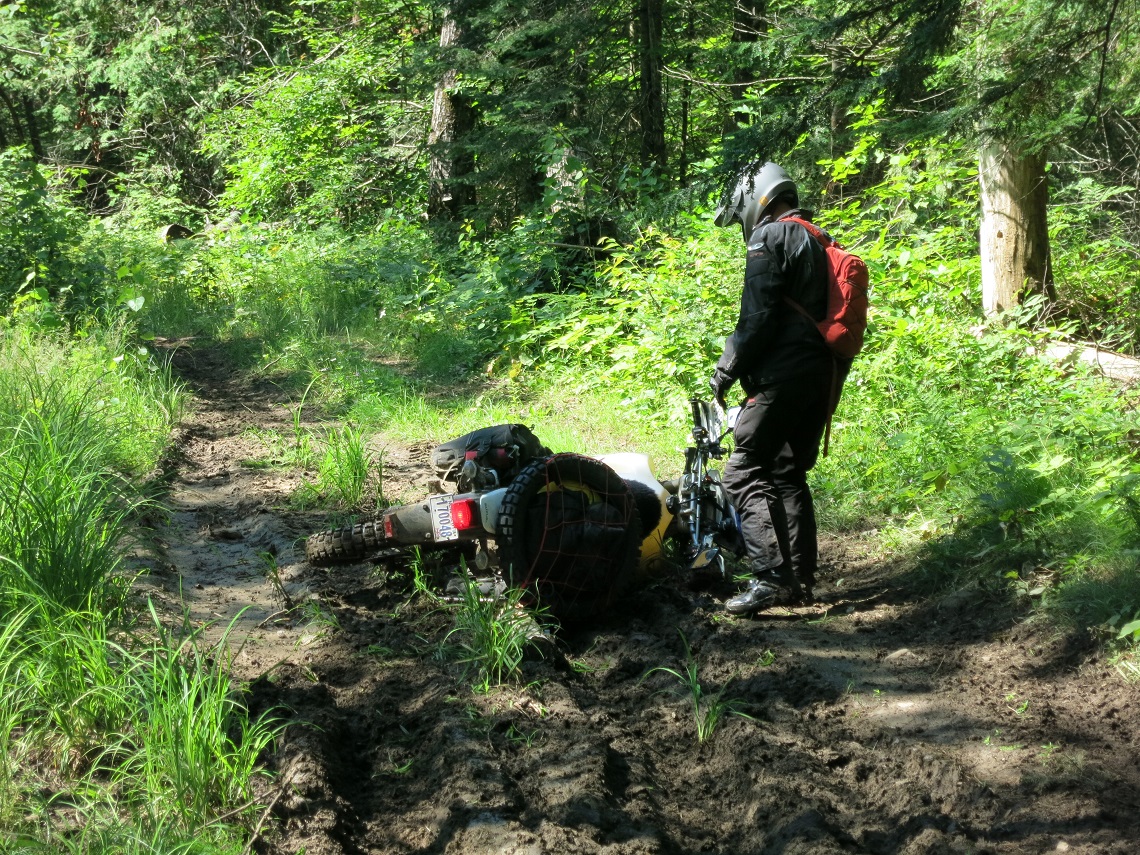
It had been far too long since my last adventure and I felt the usual knot in my stomach as I threw my leg over Crazy, hit the starter, opened the throttle and pointed her nose towards Newfoundland and the start of the trail.
Despite the full TCAT winding it’s way from coast to coast, I am restricted by the size of this article and so my story is mainly about the meat in the middle of the trail. No disrespect intended to the Newfoundlanders, Labradorians or the Vancouver Islanders among you.
From the start in St John’s, Newfoundland we crossed the Rock, took a ferry to Labrador and then headed into Quebec, where the route became more varied and the trails considerably less well-kept. The first thing we became aware of were the swarms of bloodsucking, demon-like, life-sapping black flies that are undoubtedly the disciples of Voldemort and are the most loathsome purposeless insects on this planet.
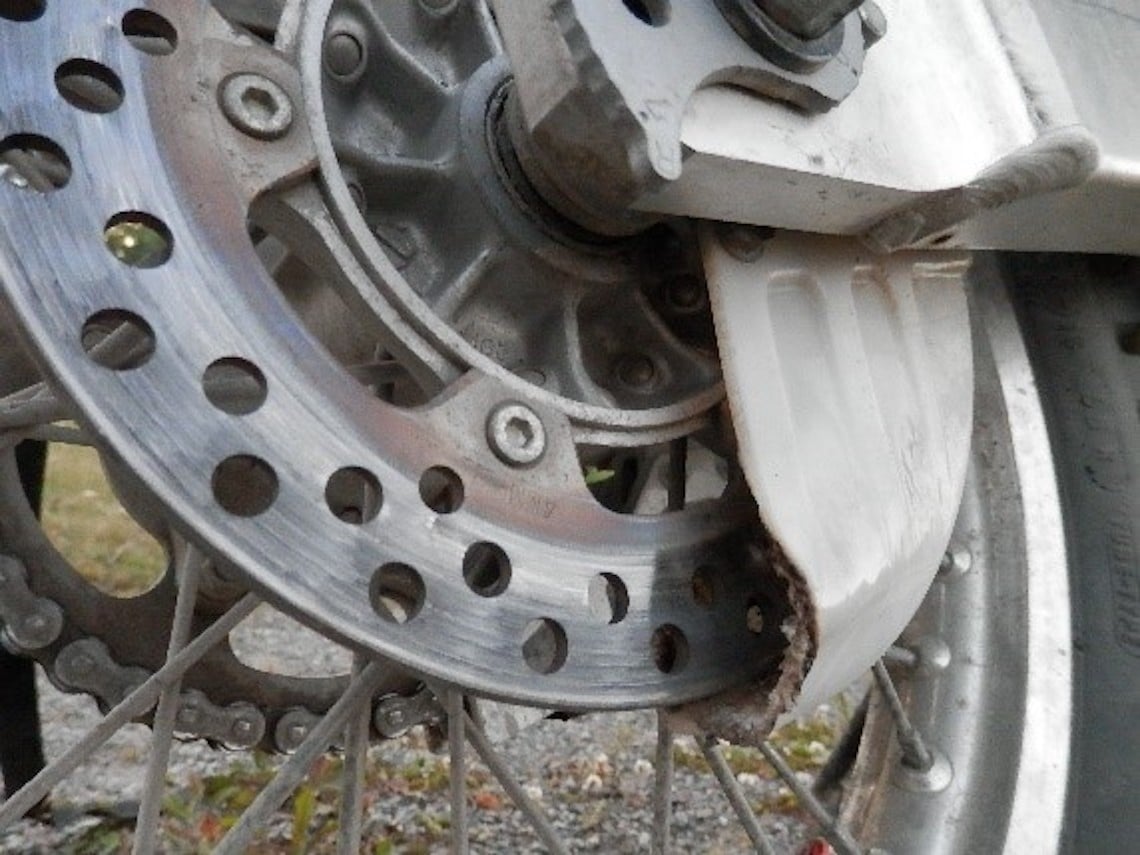
Generally speaking I do not resemble my grandmother but adorned in my anti-black fly clothing I think that I definitely took on her likeness. We also came across fire and lots of it. The sky was blackened by smoke, the sun glowed red and trees became charred relics of their former selves. Some 430 miles earlier whilst still in Labrador we had been warned that the road ahead was closed but in true Brit fashion we arrogantly assumed that it would be open by the time we got there.
It was clear we needed to learn a bit about forest fires, including how fast they travel and the huge areas that they can cover. We were told that the only way through the fire-threatened area was by Royal Canadian Mounted Police convoy and so we assembled with a collection of lorries, pick-ups and cars for an escorted transit through the area.
The start resembled that of an Olympic 100m final as we tried to keep up with the flashing blue lights. Apparently, the wind had changed direction and though the fire was still three-miles away it was ambling towards us at one mile per hour.
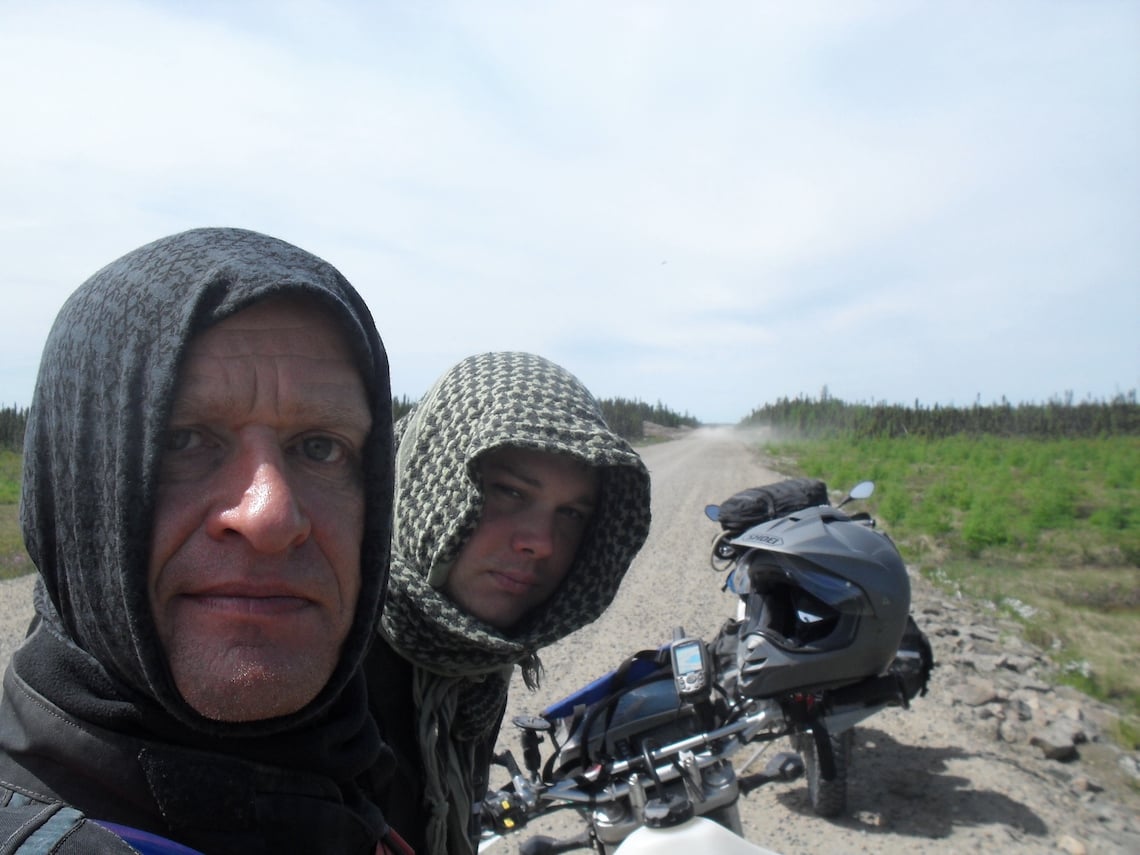
Not being trained firefighters we assumed the inferno had ‘locked onto’ us and was now sprinting in our direction. At that moment I wished that I was sat astride Valentino Rossi’s bike and preferably with him at the helm.
Our other fire event also occurred in Quebec three days later. The first I knew something was wrong was when Alex raced past me sounding his horn and gesturing for me to stop. “What?” I asked as he threw a gallon of water over my rear wheel.
Clearly, he wasn’t preparing Crazy for ‘The World’s Cleanest Bike’ competition, but I had unwittingly been riding the brake for a 100m or so which had made the disc glow red hot and set light to the plastic guard that surrounded it. Thanks to Alex’s quick actions the flames did not reach my luggage and so he averted a major disaster.
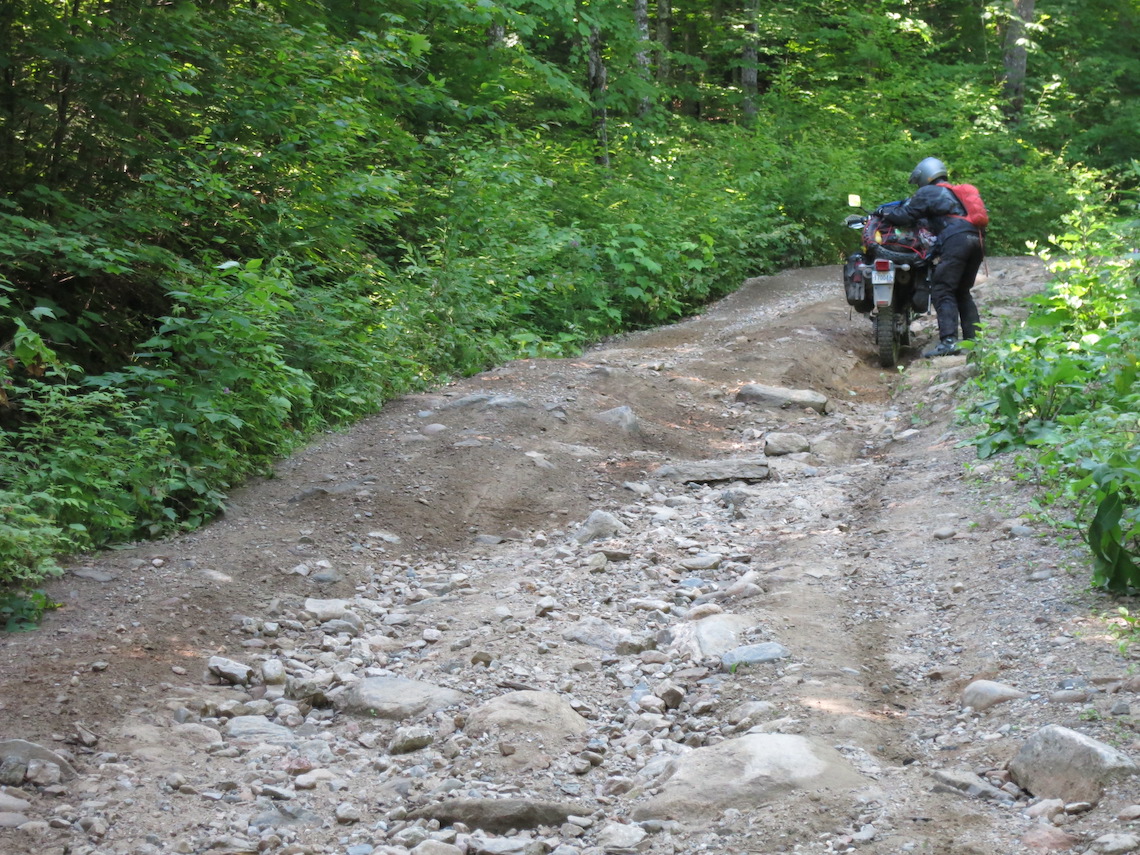
We soon concluded that whoever had created the Quebec portion of the trail had wanted to have it stand out as the toughest part, and comparing it with the route up to date they had gone a long way towards achieving their aim. Previous years must have seen significant rainfall which had left numerous washed out areas and these combined with some very narrow trails and a fully loaded bike definitely provided for some challenging riding.
Some washouts could be ridden through whilst others forced a diversion which could be anything from 100m to nine miles. Since these tracks were recorded as official roads the provincial government was obliged to maintain ‘adequate’ signage of all obstructions.
The current technique is to dangle orange tape in a bush before the obstruction and this proved useful except on those occasions when the bush was only 5m before the hazard. At night this would definitely have caused many ‘oh shit!’ moments, and so we never rode after dark.
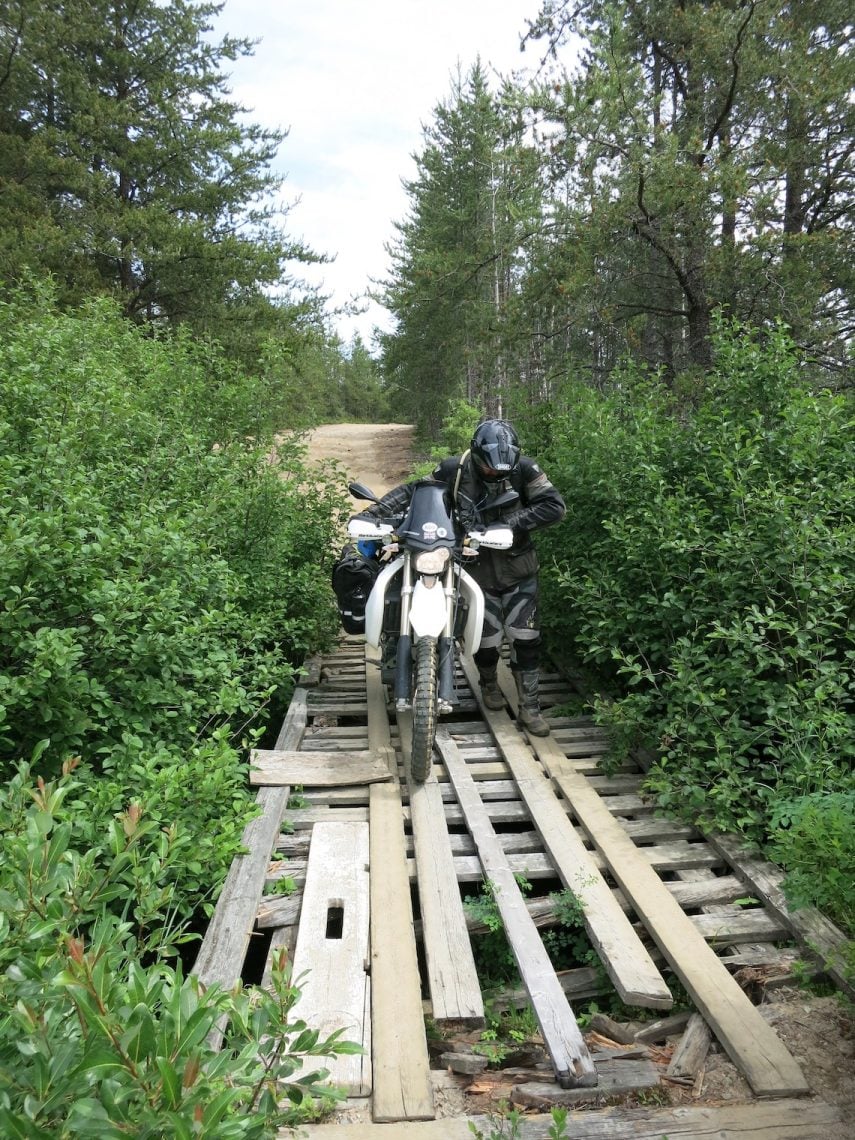
Quebec was also the province where we saw our first black bear. It crossed the road 50m ahead of us stopped, looked straight at us with the sort of glare that said ‘get off my road’ and then nonchalantly continued on its way. From then on I needed no encouragement in keeping my bear spray within arm’s reach.
One dark night and in the pouring rain we arrived at the very small settlement of Abreville. It consisted of a store and a bunk house for road workers. We were hoping for a bed in the half-empty facilities and so tracked down the boss man who unfortunately showed us a concrete slab on which to pitch our tents.
Not an easy task for tents that require six solid anchor positions which now had to be fashioned out of rocks, branches and various parts of Crazy and the Beamer. How generous of our host, though it could be blamed on my poor attempt at conversing in French.
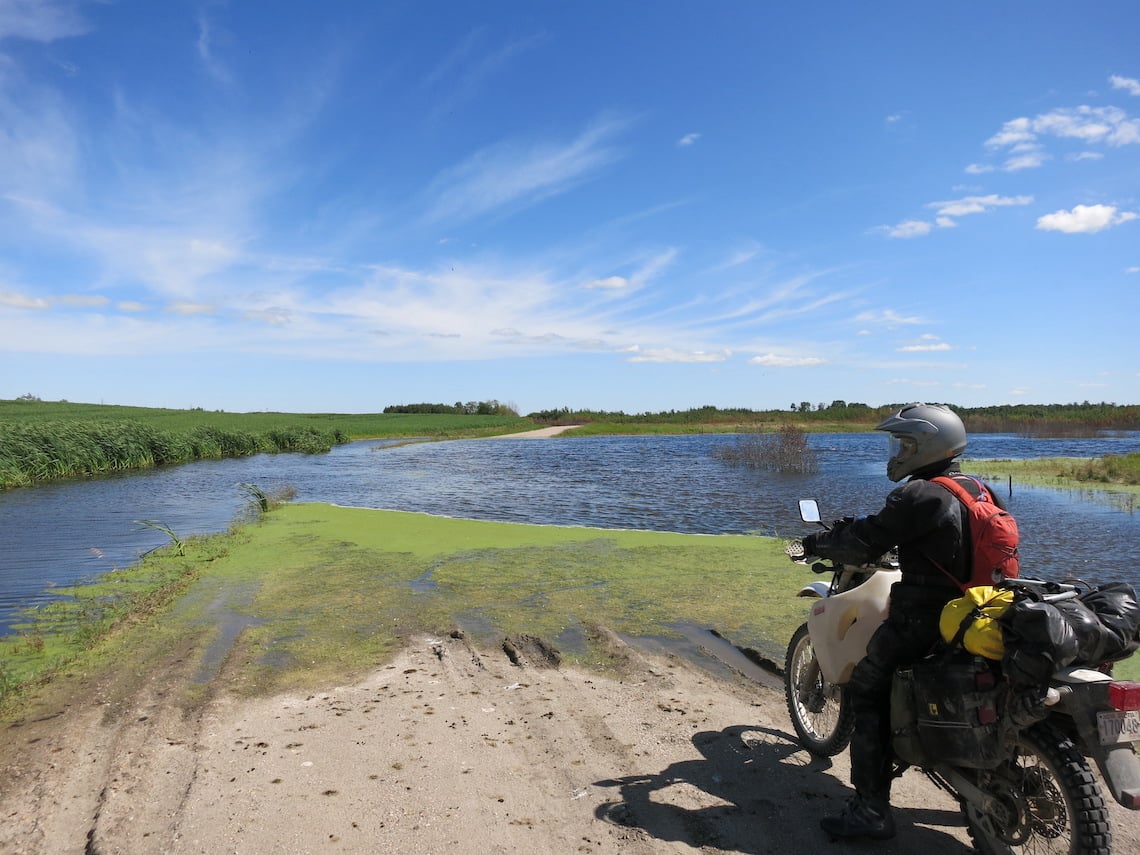
That night I employed the Seven Ps and spent 30 minutes practising bear spray drills. Drawing the canister from my belt, removing the safety guard and going through the motion of producing a cloud of spray between me and the imaginary bear. In so doing I think that I would have pleased even the best of my instructors at Military College.
My need to practice was prompted by a sequence of events. In order to get out of the rain and avoid the swarms of mosquitoes I had decided to eat dinner in my tent, but unfortunately I had emptied a can of tuna over my sleeping bag. I hear that black bears are particularly partial to unwashed Englishmen, wrapped in goose down and smelling of fish.
What followed was a restless and uncomfortable night with ears pricked for the sound of a ravenous bear. A yogi recently told me that sleeping on a bed of concrete is good for posture but if I had seen her the following morning I would have politely told her that she was wrong, as would my very sore back.
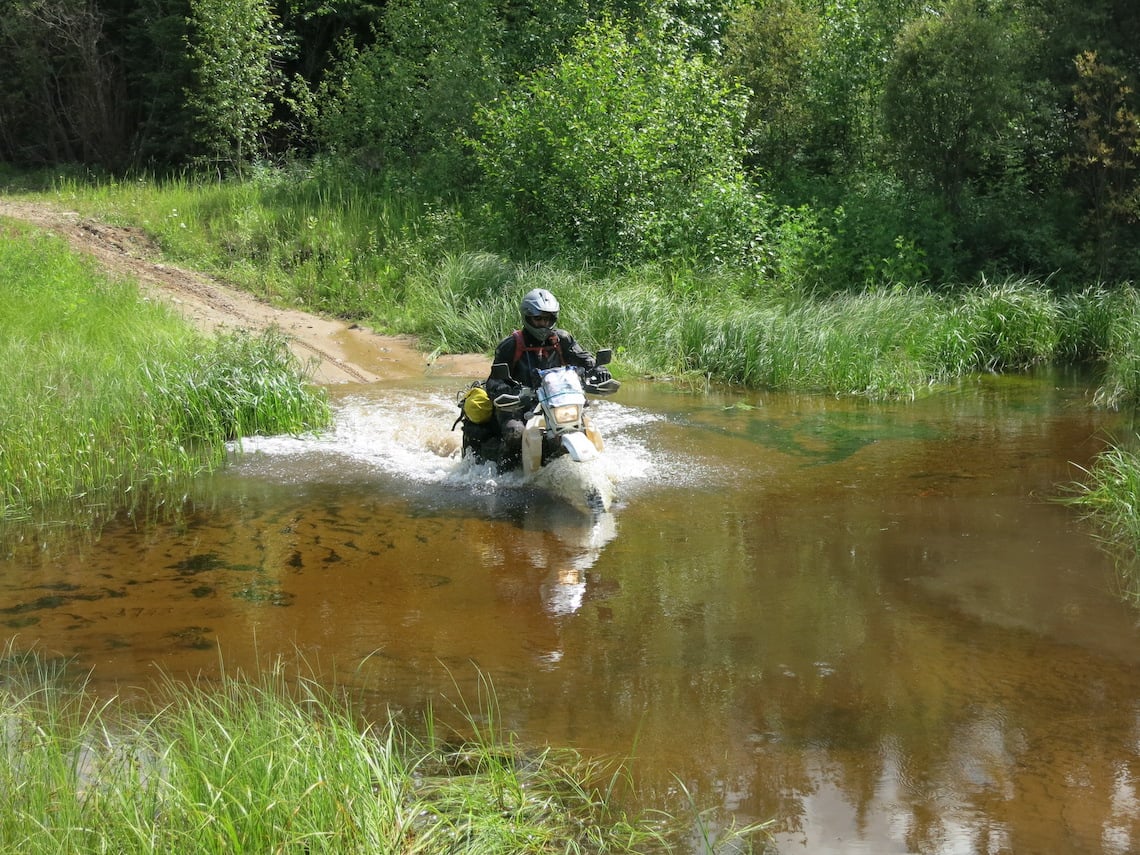
I desperately needed something to raise my spirits and I found it on exiting a corner to see Alex jumping around like a man possessed and gesticulating at a black bear cub and its angry looking mother. Apparently getting between a mummy bear and her prized possession ranks alongside telling Mike Tyson that he punches like a girl.
I was totally safe since ‘Bear Man Alex’ was ready to fend off both mummy bear and Mike Tyson with a well-aimed squirt from his can of spray. Perhaps it was my delirium due to lack of sleep but I did find it very amusing.
As I have said, the trail was often narrow being little wider than the bike and could follow a rocky track, a cross country ski trail or on very rare occa- sions, a well-groomed gravel road. The route involved numerous river crossings via bridges in varying states of structural integrity and it was evident that there was a problem with the Bridge Quality Control Department.
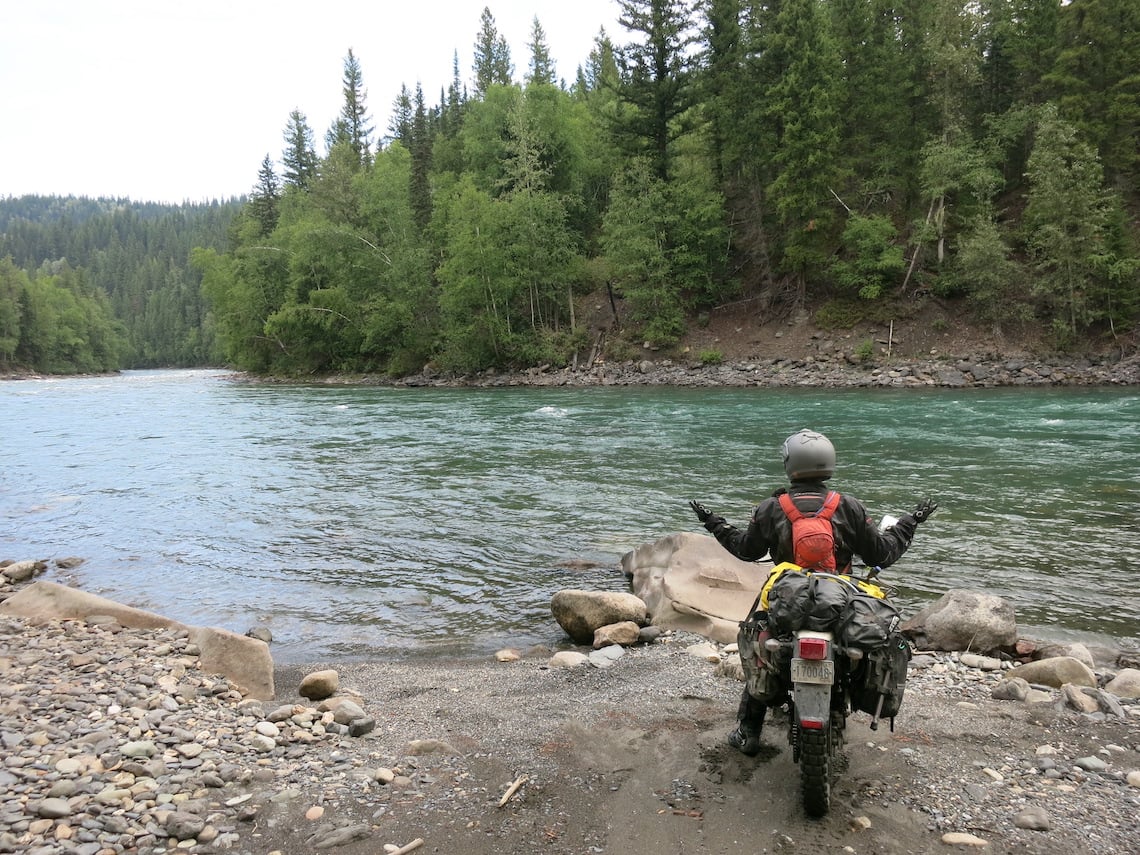
On other occasions we would use the age-old method of ‘wade and then ride’ but unfortunately this method often morphed into the ‘let’s play submarines technique.
Despite the rough road conditions in Quebec it was reasonably dry which is something that cannot be said for the next province, Ontario. Apparently that year was one of the wettest for some time and the enormous quantities of standing water confirmed that. Every day we had to cross numerous flooded areas often requiring detours due to deep water.
On a couple of occasions Crazy employed her favourite submarine technique and would invariably ingest 400cc of muddy water. This would result in her looking like a dancing poodle as she pranced around on her back wheel whilst the offending water was drained from her internal workings.
Alex taught me to do this by putting a sturdy branch through the rear wheel, then pulling the bike backwards until the stick jammed against the swingarm allowing you to balance your steed on its rear-wheel draining the water.
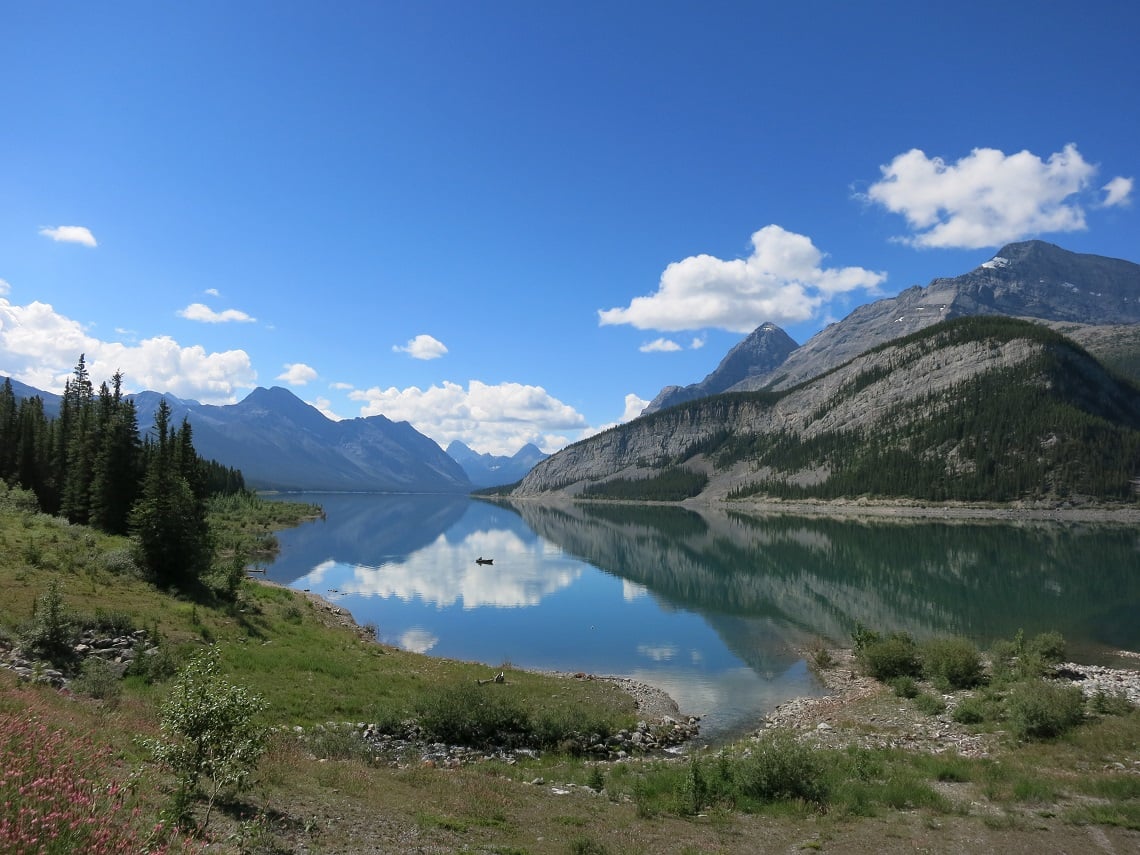
Thankfully on these occasions, I managed to hit the kill switch and stop the engine before water entered it, thereby avoiding irreparable damage. Each night a collection of sodden clothing, wallet contents and anything else that had become submerged would make the inside of my tent resemble a jumble sale. Thank goodness for plastic Canadian banknotes.
Thick clinging mud and deep stagnant water were our constant companions for the next three weeks through Ontario, Manitoba and Saskatchewan. This coupled with my stupidly short legs meant that Crazy and I regularly adopted the recumbent position.
That said, the mud did have one ad- vantage in that it recorded the presence of other people using the trail. By applying my non-existent tracking skills I was able to read the daily ground sign of knobbly motorcycle tyres and we soon realised that two other motorcycles were going in our direction.
We saw their tracks for weeks on end and on the couple of occasions we stayed in hotels we obtained internet access and discovered that there were a couple of Kiwis doing the TCAT a week or so ahead of us. They were not camping and so were able to get online and regularly post reports regarding the progress they were making, trail conditions and any hazards they had encountered.
Unfortunately for us the timing and our lack of internet connection was such that we had usually passed the section before receiving their posts and so failed to obtain advanced warning of upcoming hazards.
Flat, featureless and uninteresting is how my Canadian friends describe the Province of Saskatchewan. That is the case in the southern part close to the Trans-Canada Highway (TCH) where it is so flat that you can visit your grandparents and wave goodbye for three hours when you leave.
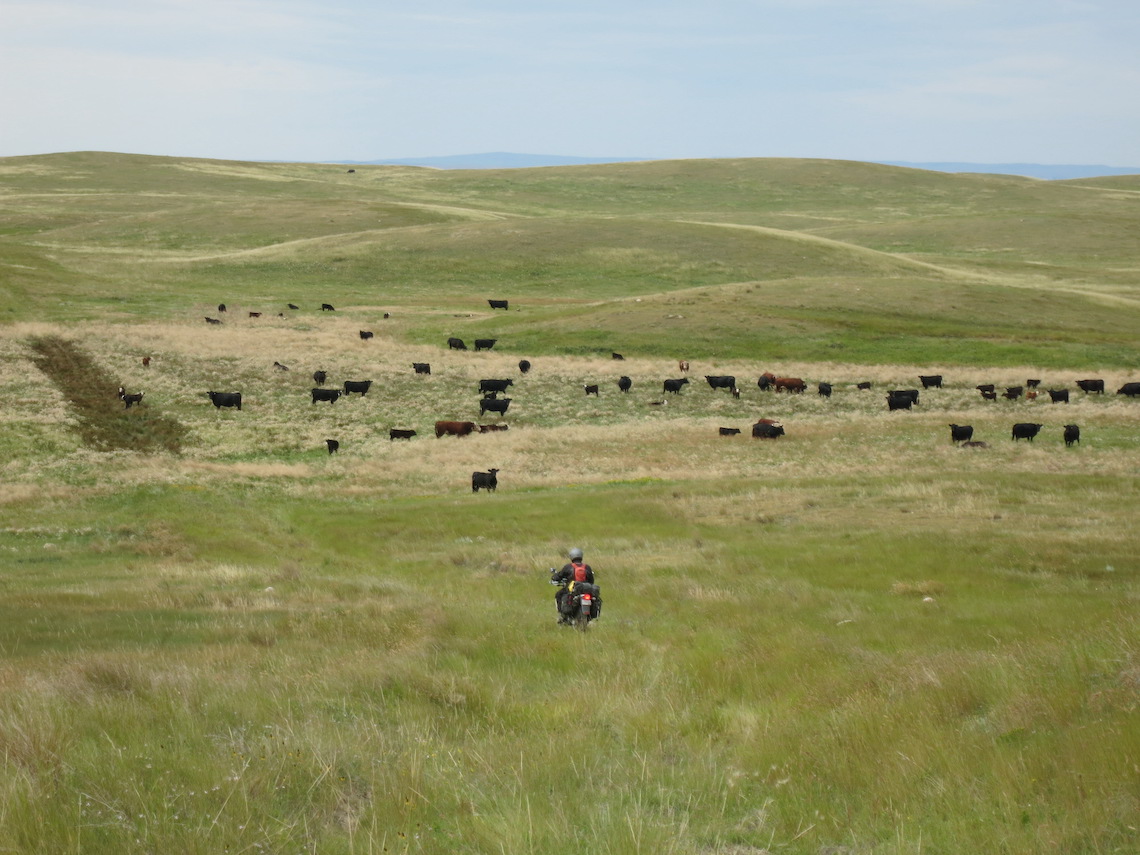
Once you are a couple of hundred miles north of the TCH the grasslands are interspersed with hills, forests and grassy areas known as grasslands. The constants were grass, water and mud. For some reason we assumed that as soon as we crossed the Ontario/Saskatchewan Border the water would disappear and be replaced by nice dry, hard-packed trails.
Oh how naïve we were! Instead of being derived from the aboriginal word for ‘swiftly flowing river’, Saskatchewan should simply mean ‘the land of floods’ since that is the condition most of the province appeared to be in. In every direction, the land was underwater and better suited a DUKW (amphibious military vehicle) rather than a motorcycle. Perhaps that would be a business opportunity, ‘Historical Saskatchewan DUKW Tours’.
Roads in the prairies are quite monotonous in that they follow a grid system where they are parallel or perpendicular to each other and the only alterations in course are a right or left 90 degree turn. Often these roads follow the sides of fields and are used so infrequently that landowners often plant over them in the hope of making a few extra dollars.
It then becomes very difficult to see any deep ruts and vehicle tracks formed during the rainy season which are then baked solid in the summer. Another observation is that when deer are well clear of a road they will become spooked at the sound of a not so quiet 400cc single.
Clearly, deer cannot have more than a couple of brain cells to rub together since instead of running away from the scary motorcycle they will proceed directly towards it on a constant bearing clearly with the intent of starting a game of chicken. Unmaintained roads and suicidal deer often lead to inverted motorcycles, as Crazy found out.
Saskatchewan was followed by Alberta and slowly the Prairies climbed towards the spectacular Rocky Mountains. We had heard that the 30 miles section of trail leading up to Crowsnest Pass was incredible. Unfortunately, after only nine miles we hit the first washed out section which we managed to negotiate as we did for the second section three miles later.
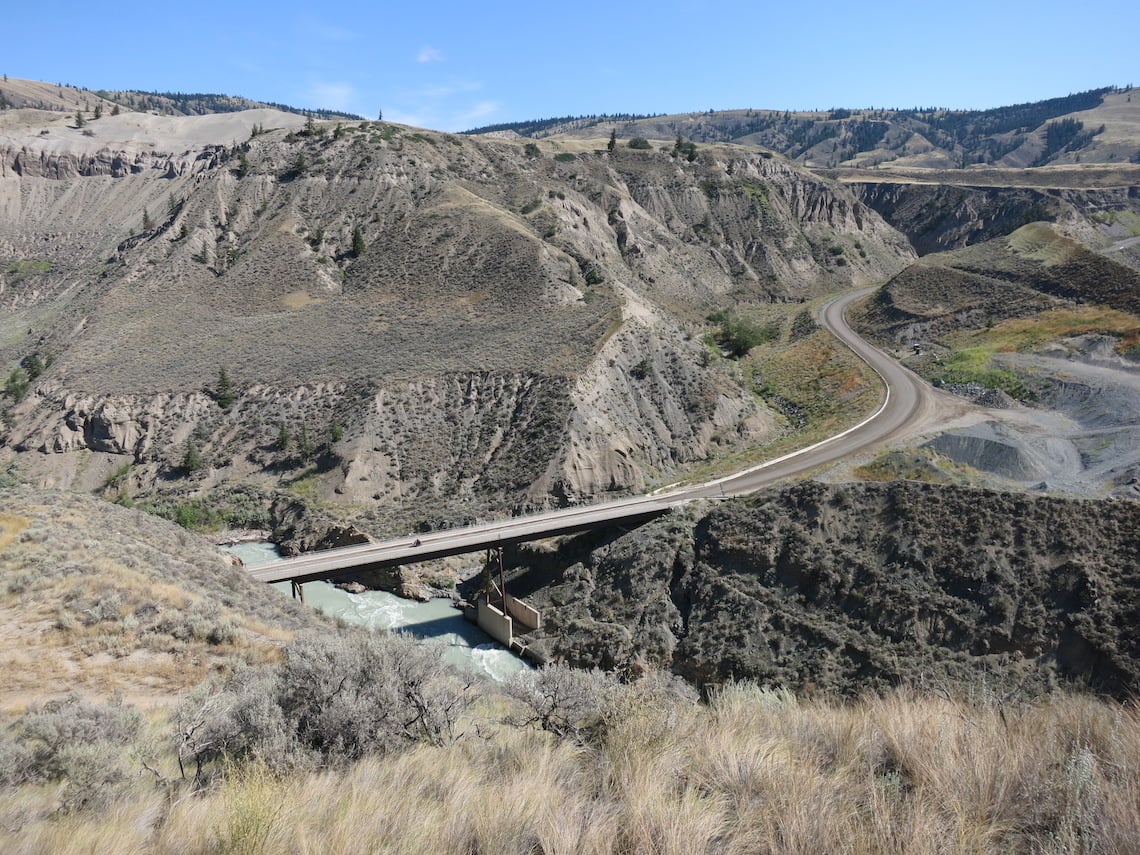
The third proved too difficult and we had to turn around and camp near the second one. Stunning, views but still 30 miles short of the 1,800m contour where we had hoped to camp. The next morning we had to retrace our steps and take the tarmac into British Columbia. A local explained that we had missed one of the most spectacular views in the Canadian Rockies and so there was a good measure of sulking all round.
Even in the midst of the Rocky Mountains, there were areas reminiscent of the Prairies with large expanses of tall grass being grazed by herds of cattle. It was clear as we followed the overgrown trail that the ‘bovine lawnmowers’ were remiss in their duties.
Being in the mountains meant that we were now subject to mountain weather which is generally unpredictable, inclement and cold. On a couple of occasions violent thunderstorms led to localised flash flooding and once during an early morning downpour we had to dig a network of irrigation channels to stop Alex’s tent from being washed away.
The Okanagan Valley also sits in the mountains and is the complete opposite. It has a southern European climate, is a wine area and the fields are full of soft fruits despite being sat at 400m. We had a chilled out day spent lapping up the sun with friends on one of the numerous beaches dotted around Lake Okanagan. The Snowbirds, the Canadian equivalent of the Red Arrows even put on a display for us.
One of our hosts had a brand new Ducati Multistrada S and had never ridden off-road in his life. Despite arguing that he should really play golf, his wife managed to convince him to join us on the following morning’s ride. Despite riding an expensive bike on-road tyres he did very well and it was clear that we had not had to twist his arm to join us since his throttle hand worked perfectly well. We now take pleasure in the knowledge that he has left the ‘dark side’ and is a committed adventure rider.
Of all the ferry crossings my favourite was one that solely used the power of water to move across the river. When kayaking I learned the term to Ferry Glide, whereby you move across the flow of water using the power of the water to propel you to the other bank and I now know where the term comes from.
After mainland British Columbia came the Vancouver Island section where the TCAT finished at Grant Bay on its Pacific Coast. The finish was a bittersweet mix of accomplishment, fatigue and a burning desire for more adventure.
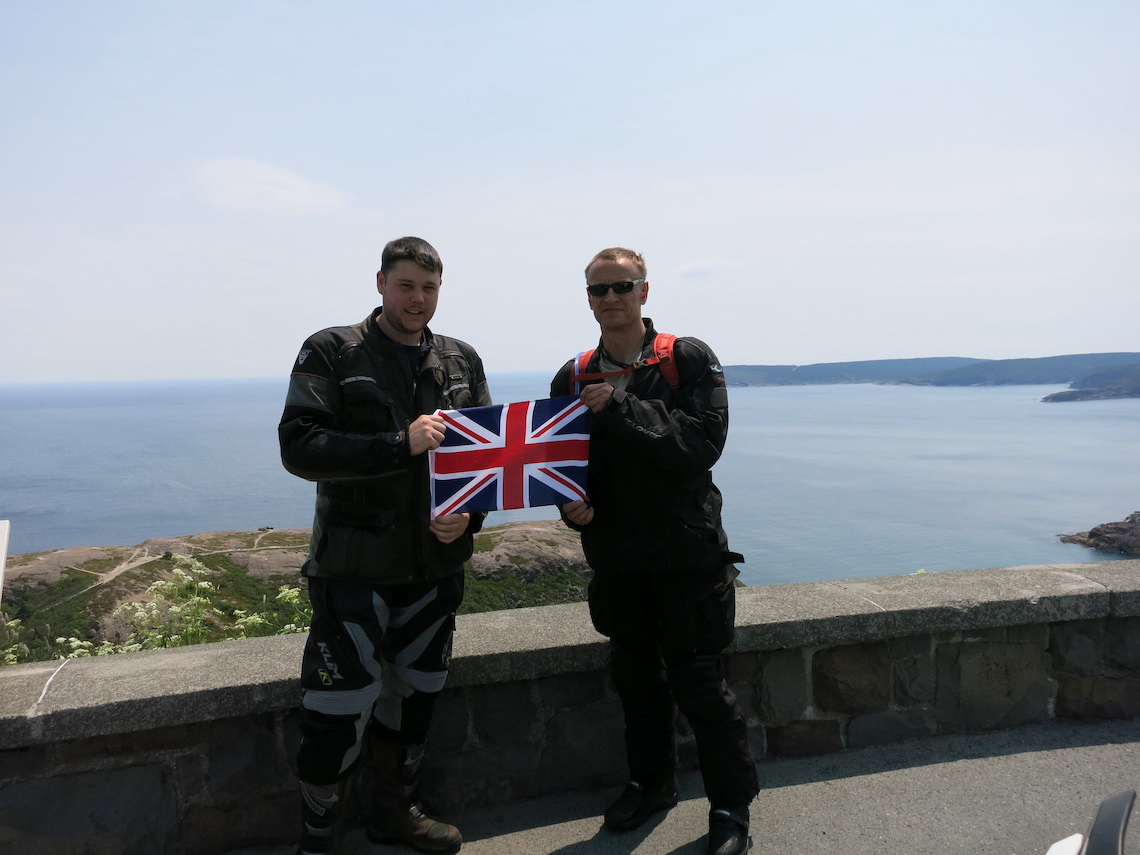
Whilst on the island ‘Tracker Dave’ had noticed that the kiwi’s tyre tracks had vanished and we later learned that time constraints had forced them home without laying any rubber on this section of the trail. Consequently the ‘Boys from Blighty’ were the first to ride the whole TCAT route.
That is of no consequence and was overshadowed by the knowledge that we had ridden a well-constructed, stunningly beautiful and challenging route that had taken us through areas that few Canadians, let alone ‘Joe Blogs’ will get to see.
We finished in exactly two months, completing 10,440 miles and were generally self-sufficient. It could be done in less time by using hotels and guest houses but we could not have overnighted in such beautiful locations. With regards to our chariots, Crazy was a little underpowered when fully loaded, though naked she would have been perfect for the trail.
The Beamer appeared to be a perfect steed, though she needed treating like a racehorse, unlike the DRZ which was more like a reliable donkey. They just kept ploughing on without skipping a beat until just days from the finish. Two things happened in quick succession to the Chinese built, German designed machine.
Firstly, a defective cam belt tensioner had run out of fairy dust or something, and then an occurrence of air being in the wrong place with respect to a rear tyre. Incredibly, after 1000s of miles of rough trail we were felled by a lonely fencing nail that had decided to join us as we crossed a set of railway lines. The Boffin, often referred to as Alex, managed to fix the snags with both hands tied behind his back, whilst hopping on one leg.
In short, the TCAT is a fun and challenging route that I can recommend to anyone with some experience of long-distance, multi-day, fully-loaded dirt riding.
The Bike
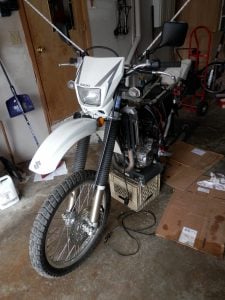 My two-wheeled companion was ‘Crazy’. Named so to rhyme with Daisy and Maisy, my first two adventure bikes. She was a Suzuki DRZ400s and I use the past tense since she was adopted by a friend when I left her in Canada. The DRZ400 is a great little bike that has been around since the time of the dinosaur and possesses a bombproof engine.
My two-wheeled companion was ‘Crazy’. Named so to rhyme with Daisy and Maisy, my first two adventure bikes. She was a Suzuki DRZ400s and I use the past tense since she was adopted by a friend when I left her in Canada. The DRZ400 is a great little bike that has been around since the time of the dinosaur and possesses a bombproof engine.
It may not be the fastest around the block, but neither is it a complete slouch. The robustness of the design was proven when I dropped Crazy in 3ft of water and even when submerged the headlight continued to burn bright. Once the water had been drained from the cylinder she started after some initial spluttering.
Not having an inside leg of a hurdler, I found the saddle too high and had to lower it by using a suspension link and moving the forks up through the steering yoke. That said, I would probably have to lower a Puch Maxi. The 30mm I lost in height did mean that I bottomed out the suspension when fully loaded and negotiating large potholes.
Travelling In Canada
Documents
Passport. Electronic Authorisation.
Language
Unlike their cousins South of the border, it is easy to forgive Canadians when they are unable to speak the Queen’s English. Besides they possess at least 50% of the world’s population of ‘nice people’. Having a smattering of French will help in the remote parts of Quebec where many will not speak English at all.
Visas
From March 2016 you will need an eTA ($7) which allows you to stay for up to 6 months. Any longer and you will need to apply for a visa.
The highway code
Unlike the USA where rules change from state to state the rules are countrywide. Forget filtering or moving to the front of a traffic queue.
Currency
Canadian Dollar in plastic note format. The dollar is doing badly at the moment so now is the time to visit.
Medical
Nothing additional required to those you should have in the UK. Check that these are up to date.
When to go
The cold/snow severly limits when you can ride and if you get it wrong then frostbite can quickly ensue. Labrador and Newfoundland can have negative temperatures well into April and the Rockies may have snow on the ground until the end of June. Consequently, the safe riding window is between early June and the end of September.
Tipping
Similar to the USA, tipping is expected for receiving food or drink no matter the quality of the service. A dollar per drink is standard.
Foods to try
For the gastronomes amongst you, try Putine, a calorie laden mix of chips, gravy and cheese curds that is a speciality of Quebec. It helps replace the calories lost during periods of heightened stress caused by bears, biting insects and mad Quebec Lorry drivers.
How to get there: One way direct flights are available in the summer to/from London Heathrow to St Johns, Newfoundland for £500 and flights to/from Vancouver for £600. If you want to ride your own motorcycle in Canada, James Cargo Motorcycle Shipping can transport a BMW R1200GS motorcycle to arrive into either Toronto or Vancouver for £1,395 by airfreight or £795 by ocean. Check out www,jamescargo.com/motorcycle_transportation/ for more details.

